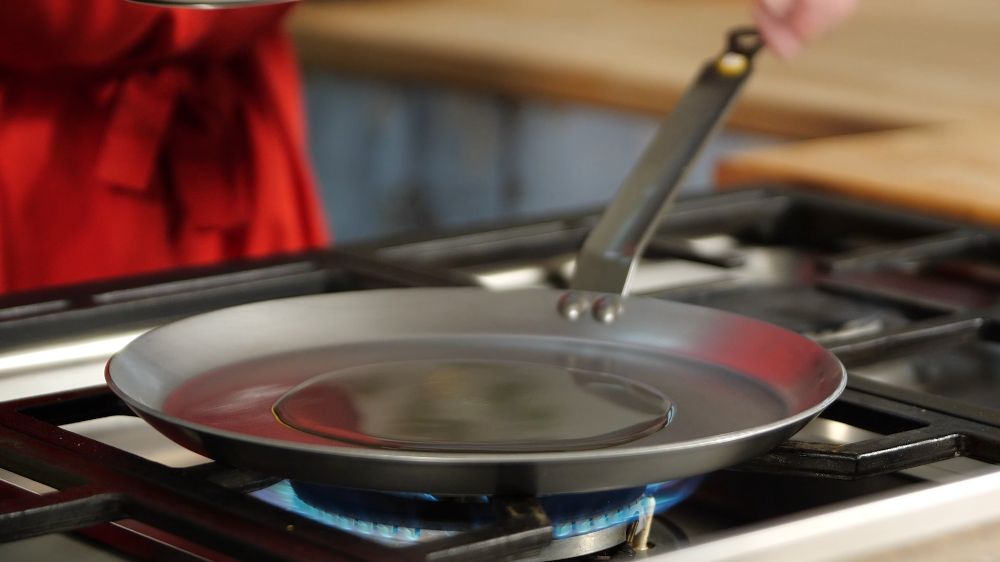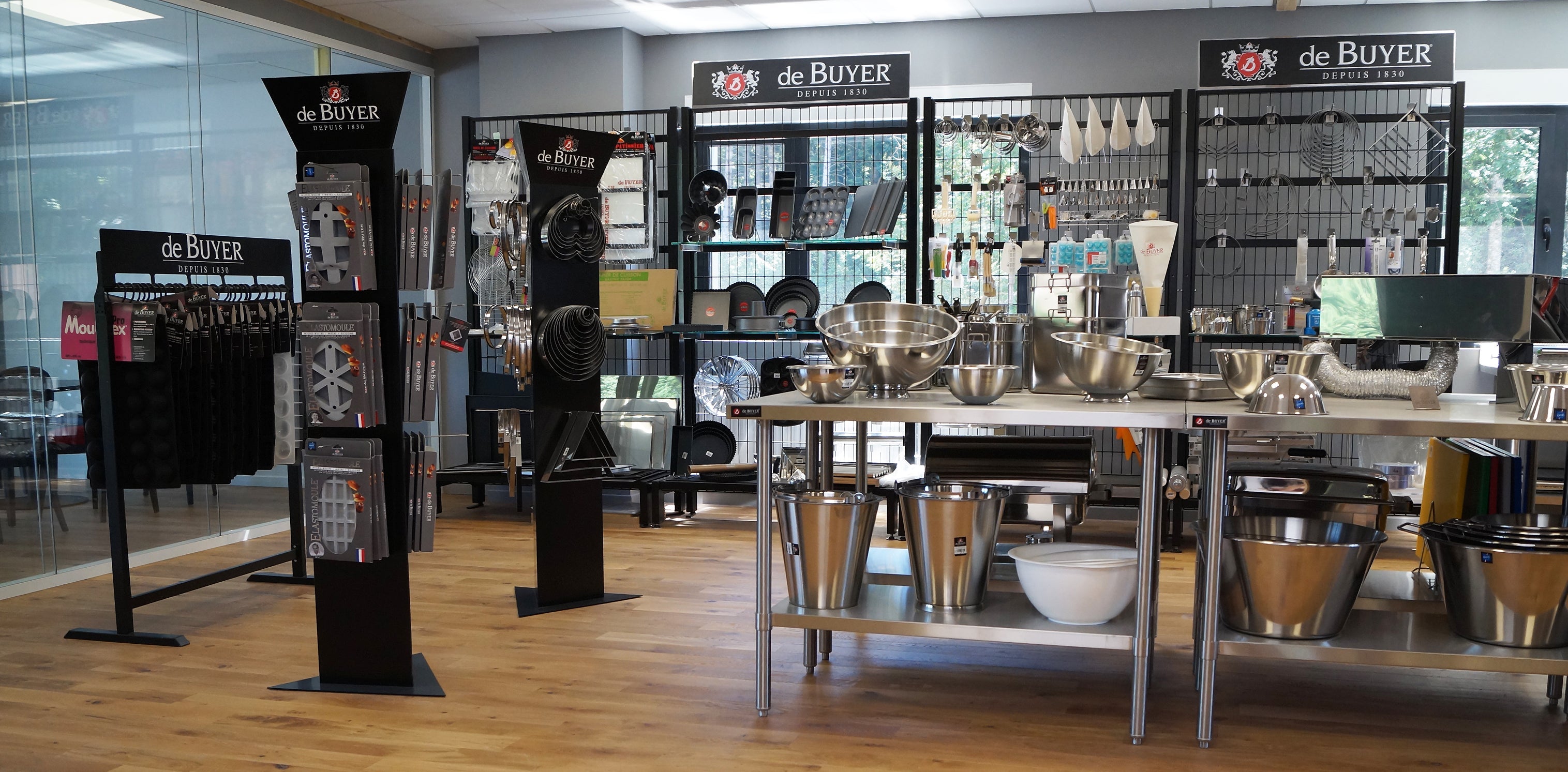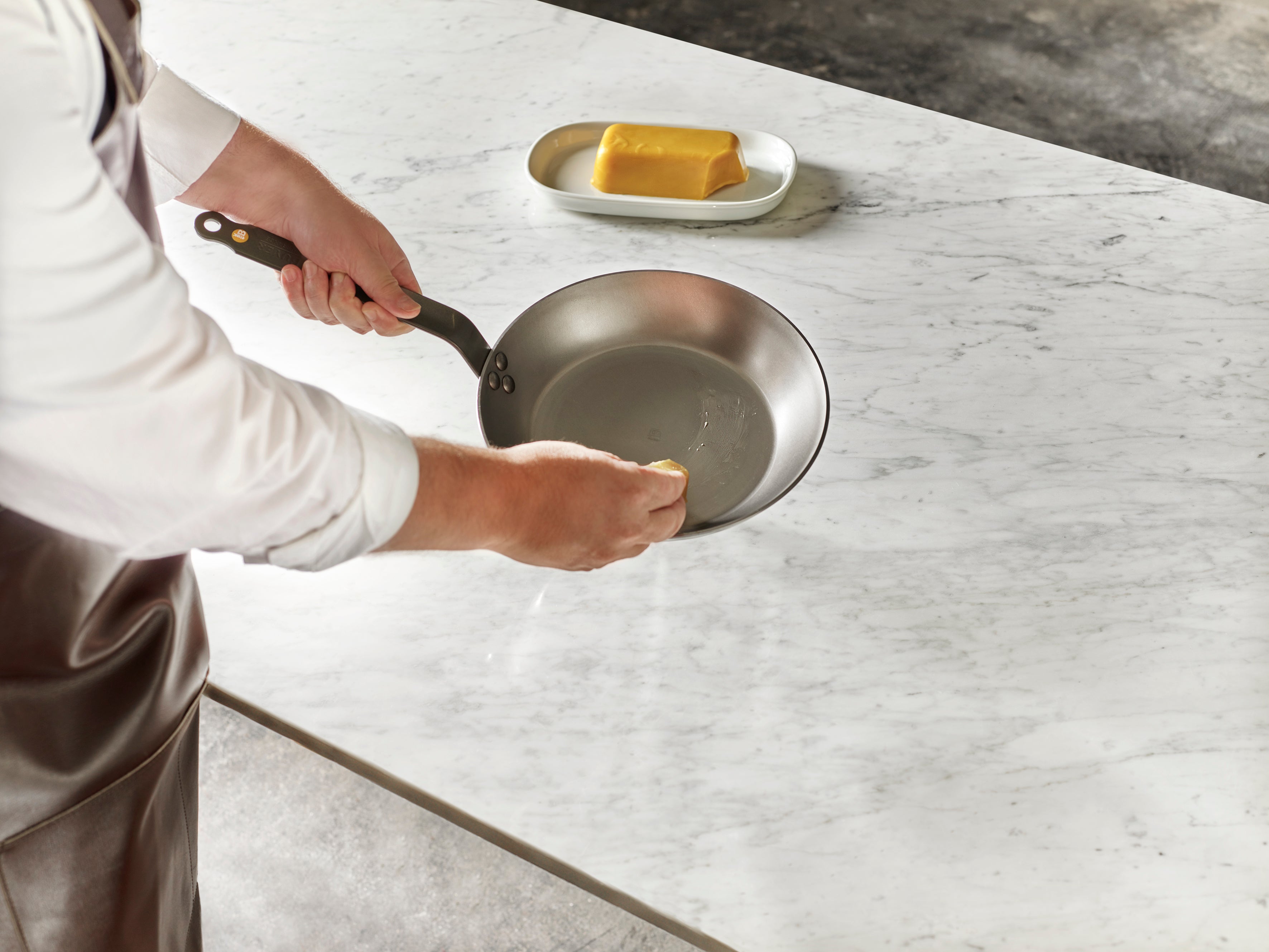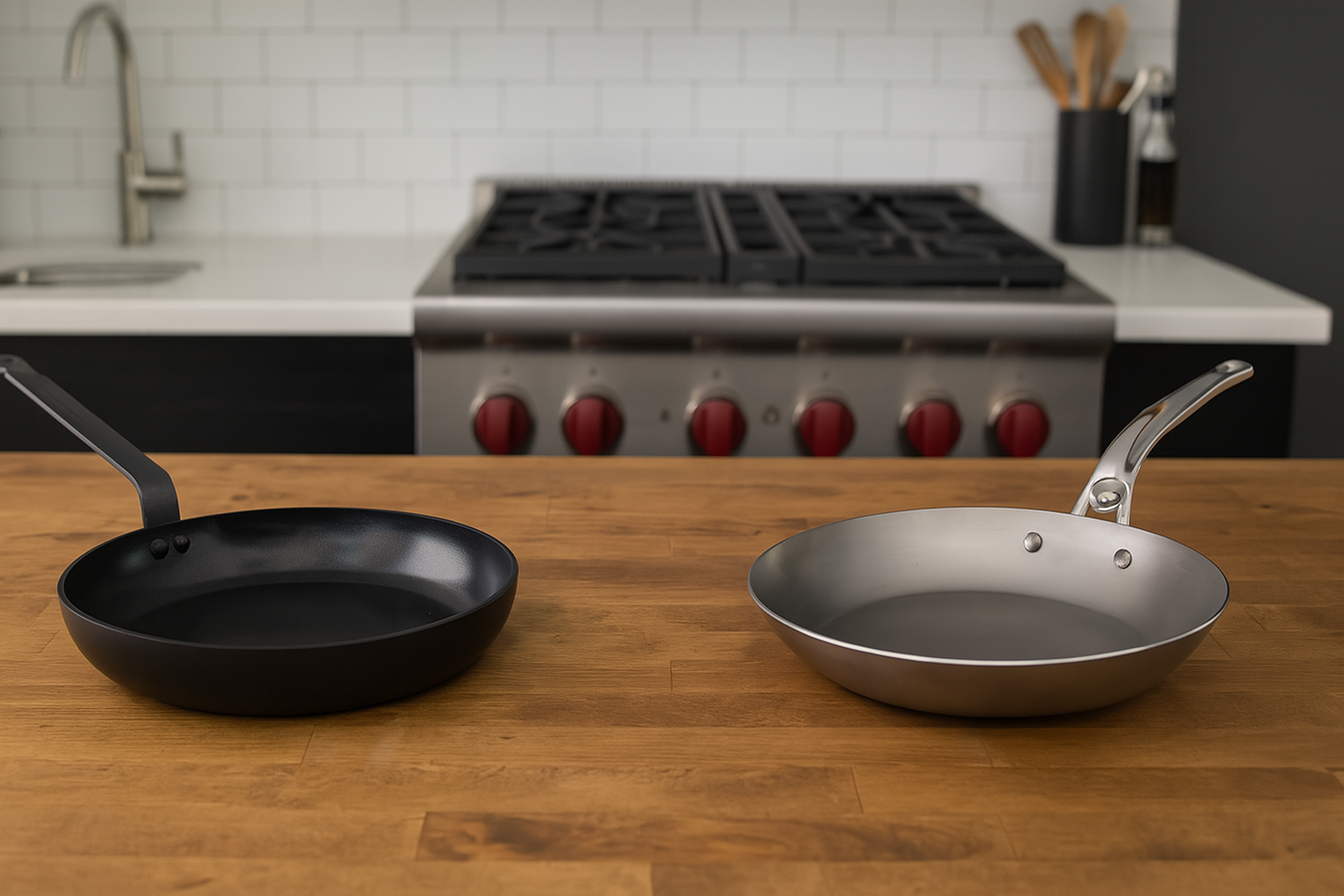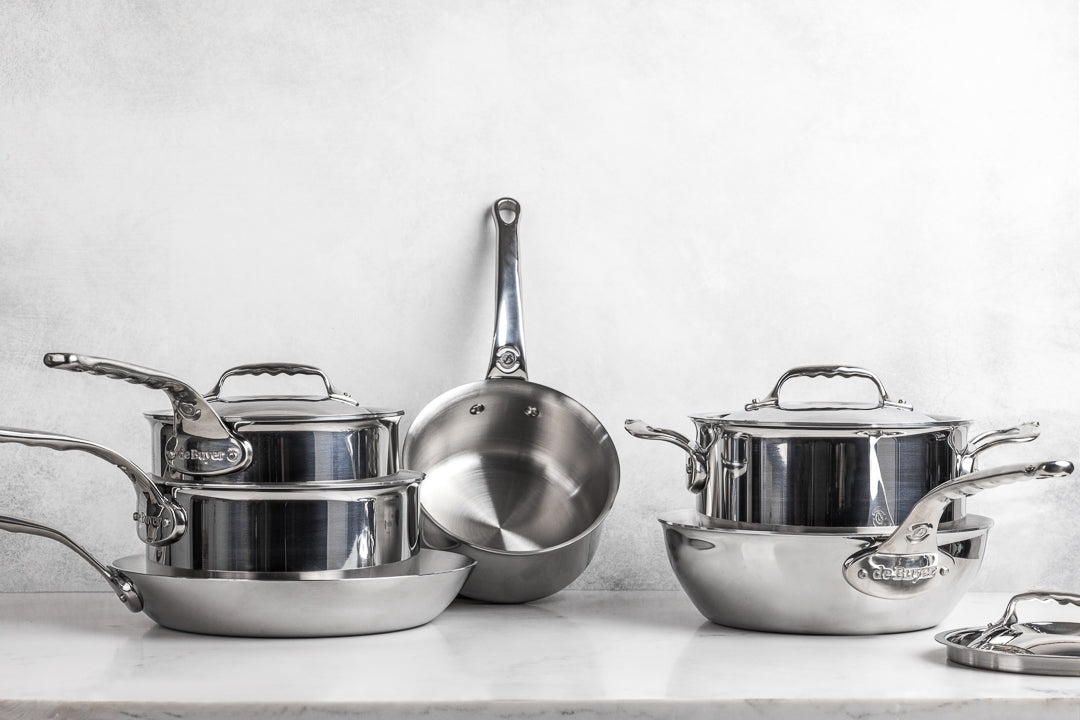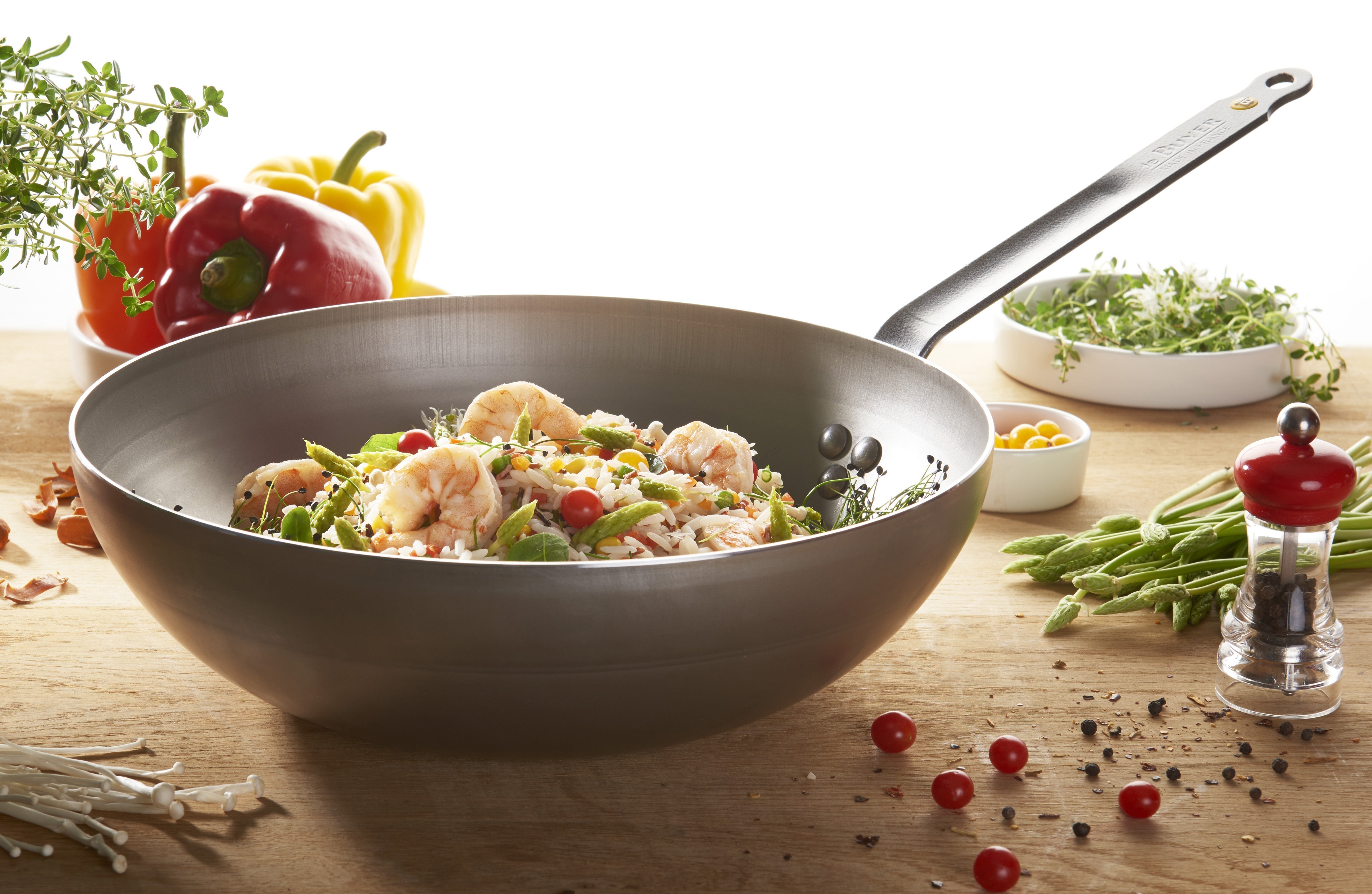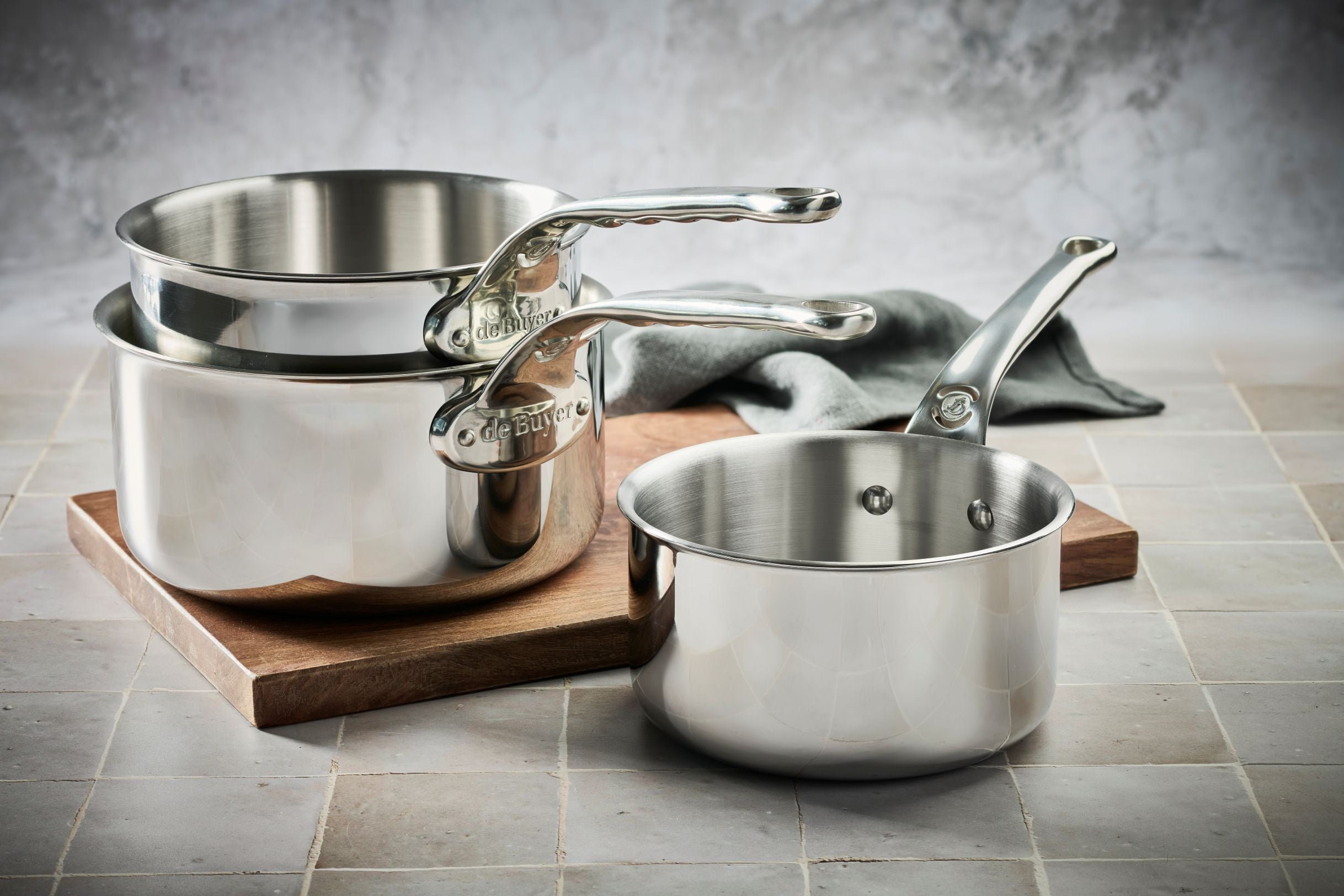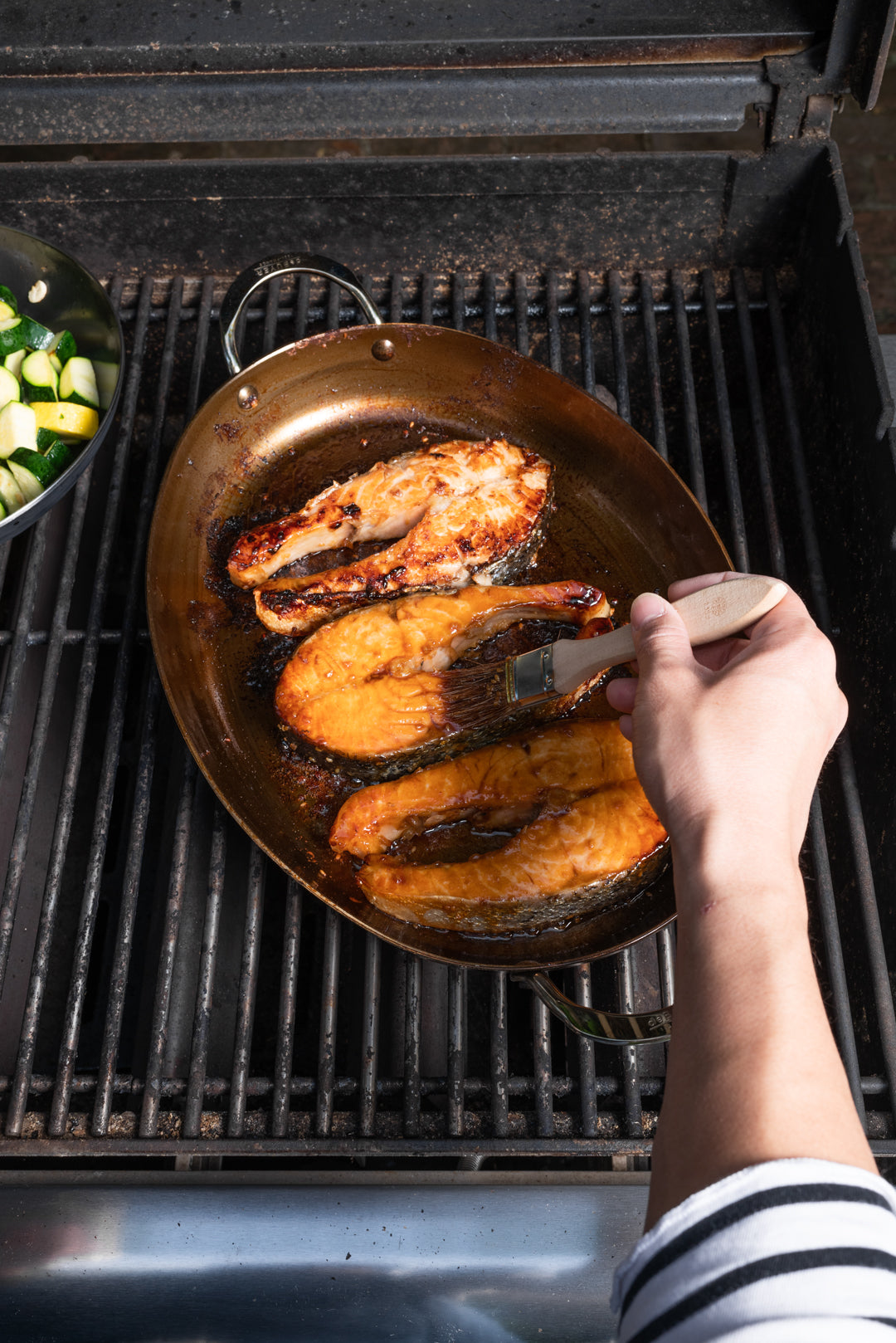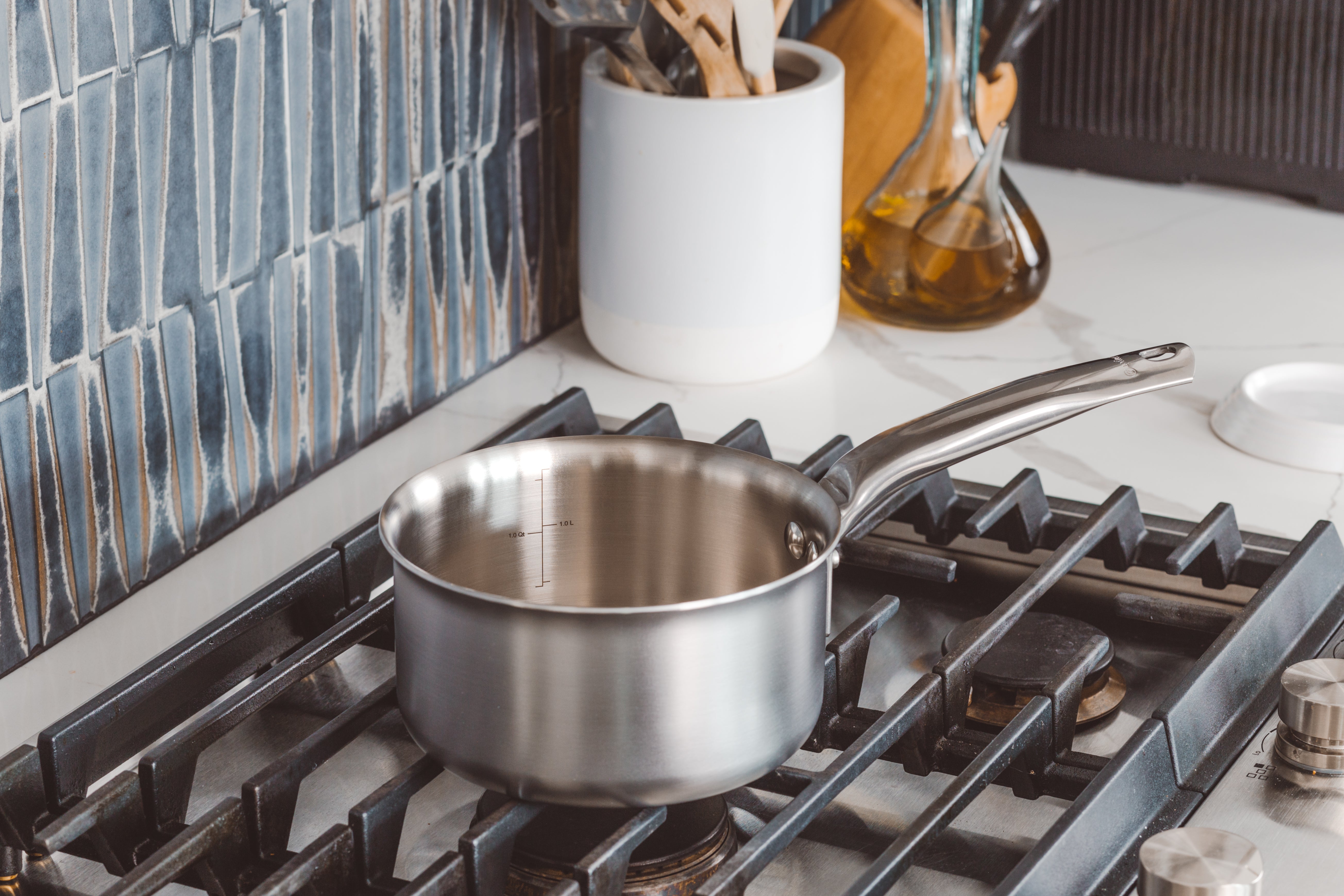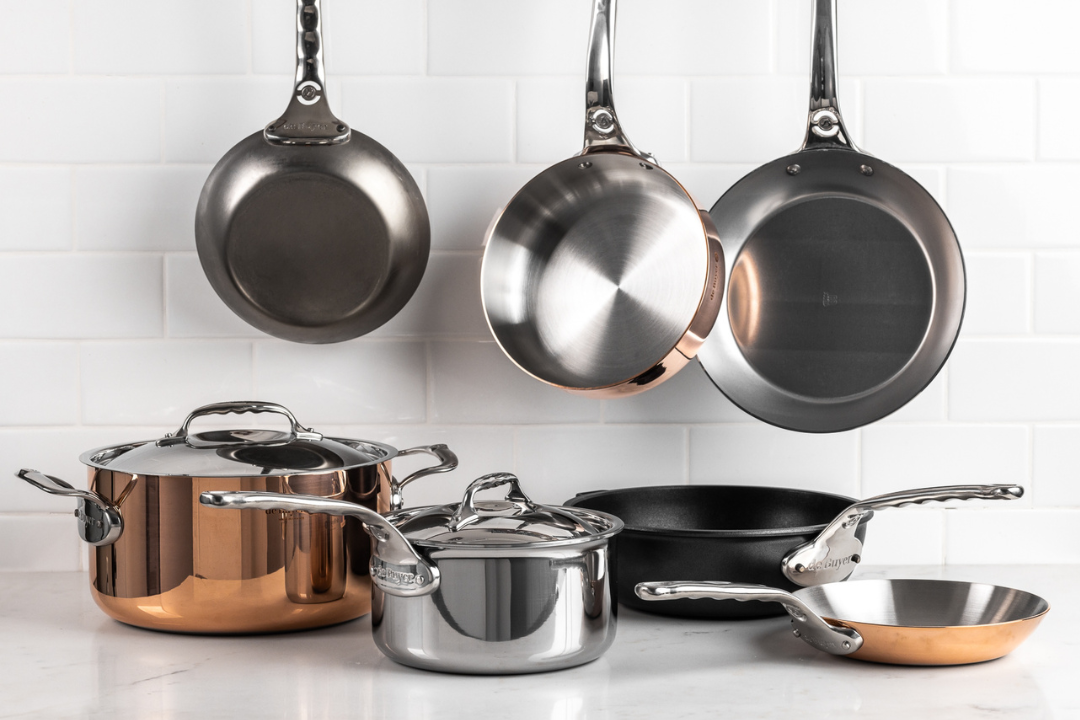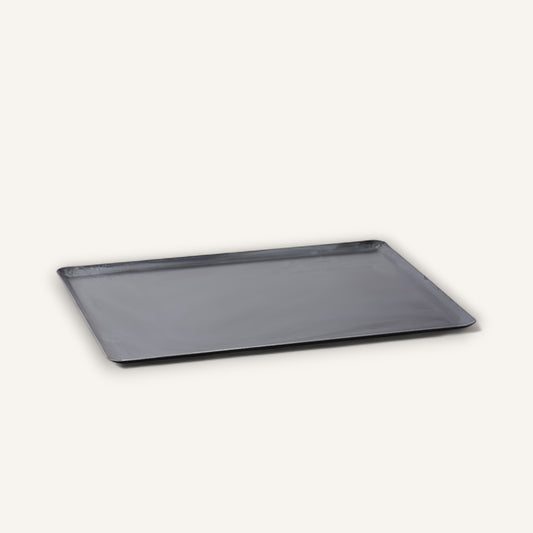When picking the best cookware as a professional chef or home cook, you’re inundated with options, from all-clad stainless steel to durable carbon steel to cast iron pans. One of the most common and confusing debates is carbon steel cookware vs. stainless steel cookware.
The truth? Both are truly excellent options in any kitchen. These pans deliver a robust, reliable cooking surface for your most daring recipes.
Still, both have select advantages, and picking the suitable material for certain dishes can enhance the results. This article will explore the unique benefits of each type of cookware set, offering expert guidance and the ideal cookware for your needs.
An Exploration of Carbon and Stainless Steel Pans
Both materials are esteemed choices among culinary professionals and discerning home cooks for their unique advantages.
Carbon steel is composed of 99% iron and 1% carbon, creating a useful pan that acts like a cast iron and a stainless steel pan. de Buyer’s 3-ply stainless steel cookware is made with 18/10 stainless steel, containing 18% chromium and 10% nickel. The 5-ply stainless steel cookware is made of 100% stainless steel.
De Buyer's cookware is proudly made in France and crafted by discerning food experts. The materials used give the three types of pans different qualities and advantages in the kitchen. Below, we explore their defining characteristics, including durability, heat conductivity, and maintenance requirements.
Advantages and Considerations of Carbon Steel Pans
Carbon steel cookware combines the best qualities of cast iron with the sleek appearance of stainless steel. This unique material allows for the best of both worlds, including exceptional heat conductivity, lightweight composition (compared to cast iron), and inherent nonstick properties.
Using carbon steel gives you excellent heat retention and extreme tolerance to high temperatures. You can also season carbon pans, creating a natural nonstick coating that offers corrosion resistance.
It’s important to note that this seasoning process, while simple, is required for proper pan use. Acidic foods will corrode the seasoned layer of a carbon steel skillet, so do not sauté or simmer foods like tomatoes or citrus. Additionally, most carbon pans are oven-safe, although some may have a temperature limit.
Advantages and Considerations of Stainless Steel Pans
3- and 5-ply stainless steel pots and pans are treasured in kitchens worldwide. They are resilient to high heat, resistant to corrosion from wear and foods, and extremely easy to upkeep.
You should hand wash all pots for optimal maintenance, but it’s fine to throw stainless steel pans into the dishwasher occasionally (unlike carbon steel, which isn’t really dishwasher safe). Stainless steel does not need to be seasoned since it doesn’t rust and doesn’t chemically react with any foods.
While stainless steel pans can tolerate very high heat, they have comparatively lower heat conductivity than carbon steel and a propensity for sticking.
So, what’s the difference between 3-ply and 5-ply stainless steel accouterments? 5-ply allows for more rapid response to temperature adjustments and even heat disbursement. Due to its lack of chromium, it performs extremely well on induction cooktops. 3-ply still has powerful heat-conducting properties and is often heavier than 5-ply, though it is less durable.
A Culinary Performance Comparison
Now, let’s compare and contrast the culinary prowess of carbon steel and stainless steel pans across various cooking scenarios.
-
Searing: Steaks are meant to be seared in the nonstick surface of a carbon steel pan. These tools are ideal for getting the perfect sear on any food. Chris Scott, chef at the Institute of Culinary Education, says, “[Carbon steel] is great for getting a hard sear on meats and fish.”
-
Sautéing: Both materials are excellent at sautéing, offering excellent heat conduction and performance for achieving delicious results in your cooking.
-
Frying: Carbon steel's superb heat retention gives it a narrow victory in shallow pan frying. Stainless steel, lacking reactivity and solid heat distribution, is a classic go-to for deep frying.
-
Simmering: Carbon steel will give an excellent, even simmer as long as the food isn't acidic. Stainless steel will simmer acidic food with no problem.
-
All-around cooking: Stainless steel is the winner here simply due to its versatility, durability, and corrosion resistance. Food Network judge Monti Carlo says, “If your recipe box is chock full of recipes that lean acidic, skip [carbon steel].” Just be mindful of food sticking.
Decisive Factors for Selecting the Optimal Pan Material
Both pan materials fulfill specific roles in the kitchen, and a well-stocked kitchen will have both. That said, if you’re looking for an all-around, any-occasion cooking champ, the premier 5-ply stainless steel is perfect, assuming you’re willing to spend. It's the most expensive option.
Carbon is lighter and more durable, and 100% has a place in your kitchen. It can do some actions incredibly well but can’t do everything. Seeking a budget-friendly 5-ply? Then, a 3-ply is your pick.
Consider what your stovetop is currently missing and your cooking proclivities. Remember that all the high-quality cookware at de Buyer is resistant to warping and designed to last.
Expert Insights on Care and Maintenance
Regardless of the material, quality pans will require a certain amount of upkeep. However, carbon steel may require more maintenance, similar to a cast iron Dutch oven. No quality carbon steel will come pre-seasoned, so your first order of business will be seasoning your new pan. Here’s the simplified process:
- Clean the protective beeswax layer from the pan and dry.
-
Heat a small amount of neutral oil in the pan, rub it with a towel, and let the oil smoke off. For pans like the Mineral B PRO and Blue Carbon Steel, you can also finish rubbing with the towel and then let the oil cook off in the oven at 450°F for an hour. However, please note that regular Mineral B pans with epoxy-coated handles should not be placed in the oven at high temperatures.
- Let the pan cool off.
Your carbon steel pan is now ready to go. Avoid using it with acidic foods and avoid heavy scrubbing or the dishwasher. The ideal cleaning method for your carbon steel pan is hand washing.
Your stainless steel pans do not need to be seasoned. Simply wash them with mild soap and water and allow them to dry. Stainless steel is durable and can be used to cook anything, but avoid using knives on them.
All your pans should be stored in a temperature-controlled space away from harsh heat or weather conditions. This will prevent discoloration, rust, and warping.
Elevate Your Cooking Experience with de Buyer
It’s vital to meticulously weigh the pros and cons of carbon steel and stainless steel pans and choose the option that most resonates with your culinary aspirations and preferences. Both metals are superior in their own way.
Regardless, investing in premium, enduring kitchen cookware like de Buyer pans is imperative for unparalleled culinary outcomes. A poor-quality stainless steel frying pan is worth nothing, whereas a high-quality stainless steel pan is worth its weight in gold, and the same is true of a carbon steel frying pan.
Peruse de Buyer's array of premium carbon steel and stainless steel pans to find the quintessential choice for your kitchen. Discover for yourself the perks of quality-made, expert-informed French cookware design.


